While domestic models have limited capacity, commercial mixers have the power to excel even in the busiest kitchens — be it a restaurant, cafeteria, bakery, or catering business.
Their versatility helps you complete diverse tasks — mixing, kneading, grinding, shredding, cutting. You name it, the mixer can usually do it.
These workhorses save you effort and reduce food-preparation time, making your kitchen more efficient while reducing costs.
This comprehensive buyer’s guide showcases some of the best commercial mixers available in the Australian market, including the things you need to consider before ordering one.
Types of commercial mixers
There are two main types of commercial mixers commonly used in Australia’s hospitality industry: spiral and planetary. There are also several different types of specialised commercial mixers.
Each type of mixer has advantages (and limitations too). We’ll cover each of them in detail to help you decide which one would best serve your needs.
Spiral mixers
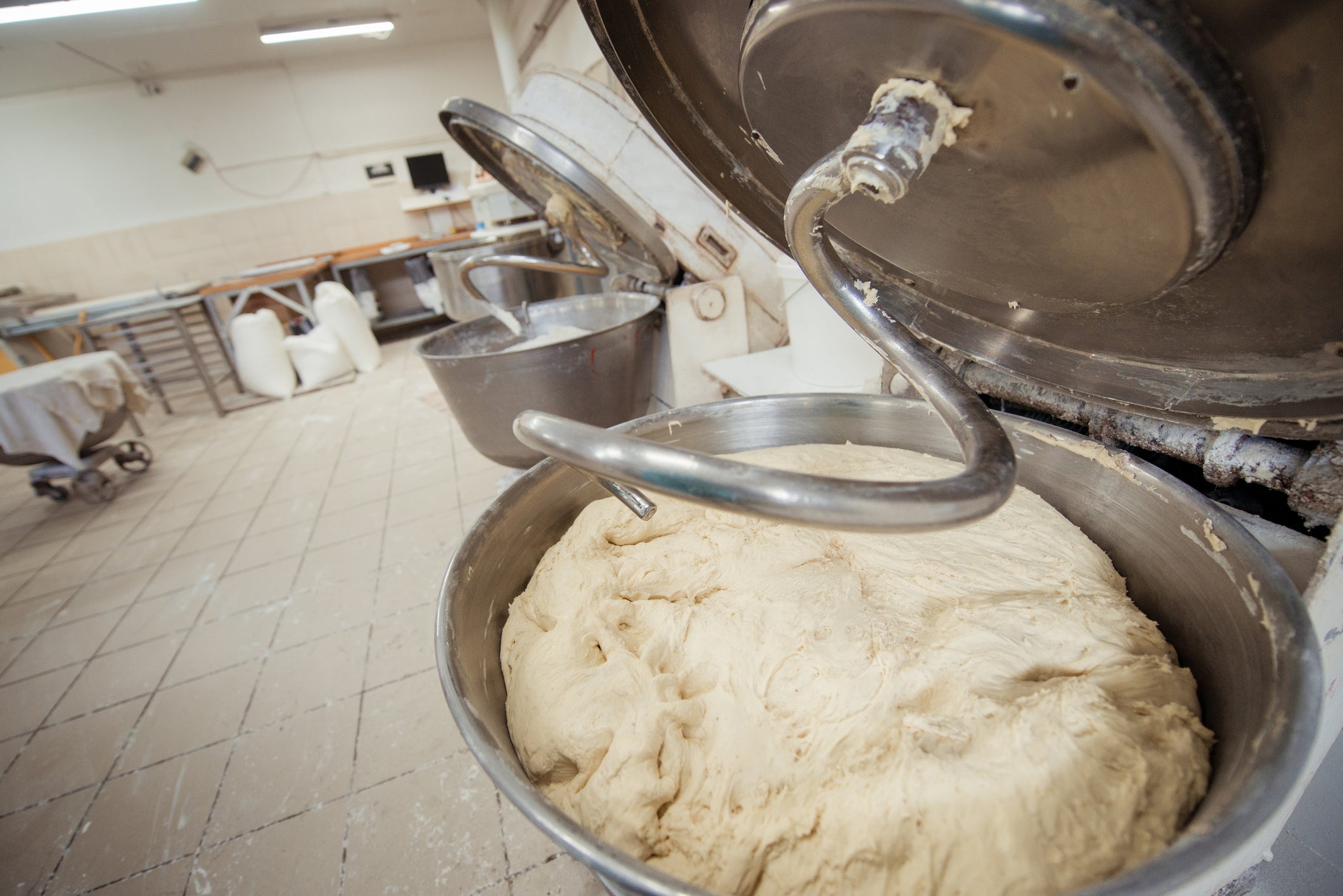
Spiral mixers are also called dough mixers as they’re used to knead dough.
They have a spiral-shaped agitator and a bowl that rotates around the agitator.
These mixers efficiently fold large amounts of dough without compromising dough quality.
The gentler mechanism keeps friction heat low, improving fermentation. Multiple speed settings allow you to optimise dough consistency.
Spiral mixers are intended for bakeries, pizzerias, and other food service establishments that need high-quality dough in large quantities.
If you need consistently well-blended, high-hydration dough for artisan recipes, this is the mixer you should get.
On the downside, because spiral mixers are designed specifically for dough and heavy-batter mixing and come with a single attachment that cannot be removed, they are not as versatile as planetary mixers.
Planetary mixers
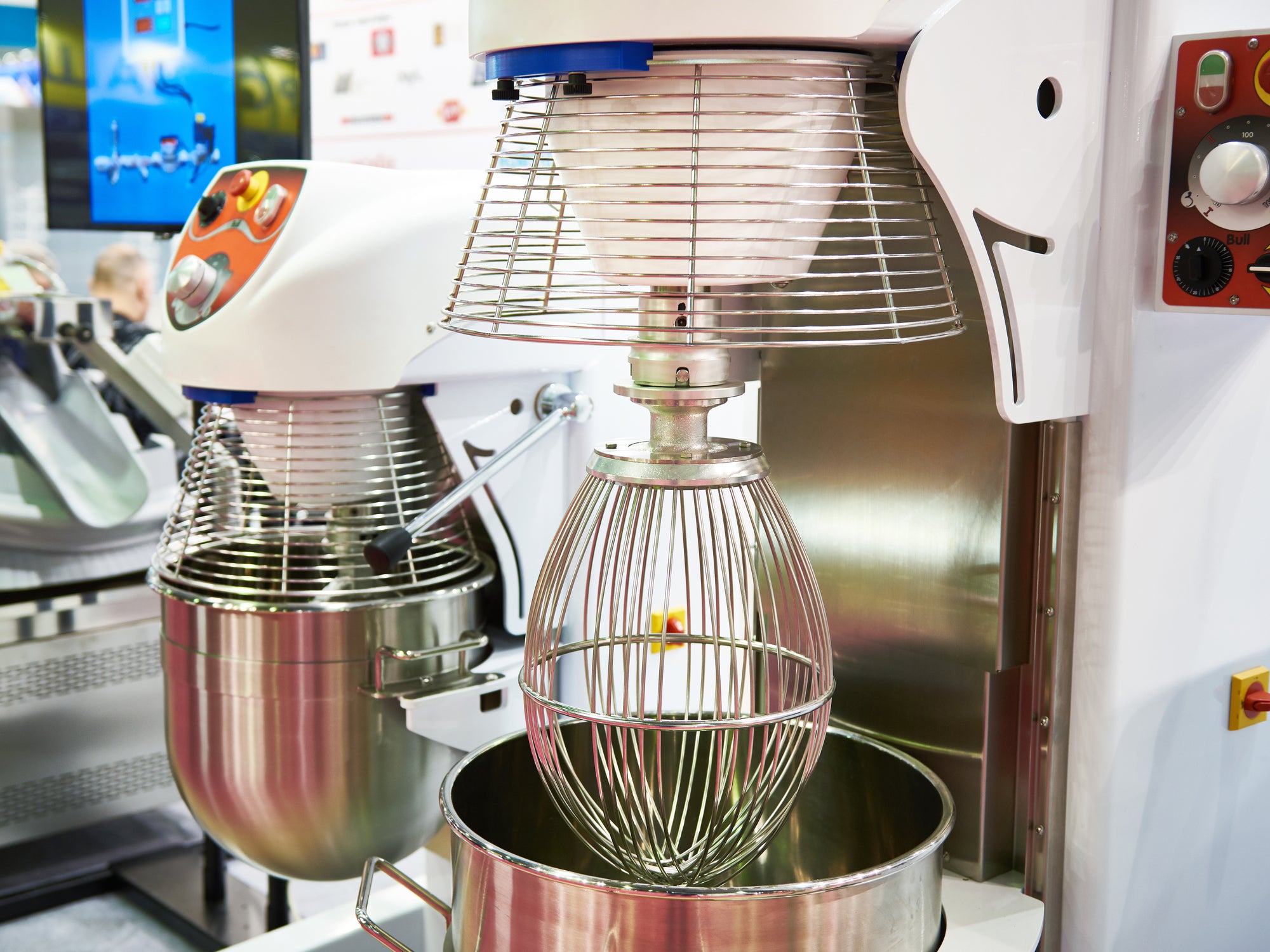
Planetary mixers are sometimes called cake mixers or stand mixers.
The mixer’s agitator spins in a planetary motion, rotating on its axis while revolving around the fixed bowl (like the planets around the sun). This ensures all the ingredients in the bowl are mixed properly.
Commercial planetary mixers come with different attachments, which makes them extremely versatile.
Attachments like beaters, wire whisks, and dough hooks can be interchanged to mix, knead, mash or whip ingredients.
Many models also come with a grater, slicer and/or grinder attachment, making them even more versatile.
Planetary mixers are for multi-purpose commercial kitchens that do more than knead dough. They are the best option when you need a mixer for general use in your kitchen.
Other commercial mixers
Vertical cutter mixers
Vertical cutter mixers are commonly used to slice and mix large volumes of ingredients quickly.
They come with a covered mixing bowl and an agitator that can be replaced with other attachments to perform different functions, depending on the model.
They are perfect for chopping things like salad greens, nuts, meats and more, kneading dough, mixing ingredients, and pureeing soups and sauces.
Horizontal mixers
Horizontal mixers are specialised, industrial mixers that can handle huge amounts of dough efficiently.
They come with a selection of mixing arms that you can change to suit the type of dough you’re mixing.
Gigamix
These large and powerful industrial food mixers are capable of processing as much as 300 litres of food in one go.
They often come fitted with their own trolley.
Styles of commercial mixers
There are three main styles of commercial mixers, based on the place they’re used: countertop/benchtop mixers, stand mixers and floor mixers.
Consider the space available in your kitchen before deciding on the best style for you.
Countertop/benchtop mixers

Light and easy to move, compact mixer models can be placed on a countertop or bench.
They’re ideal for mixing, whipping or kneading small batches of batter, eggs or dough in low-volume establishments.
The standard bowl size is 10 litres or smaller.
Stand mixers
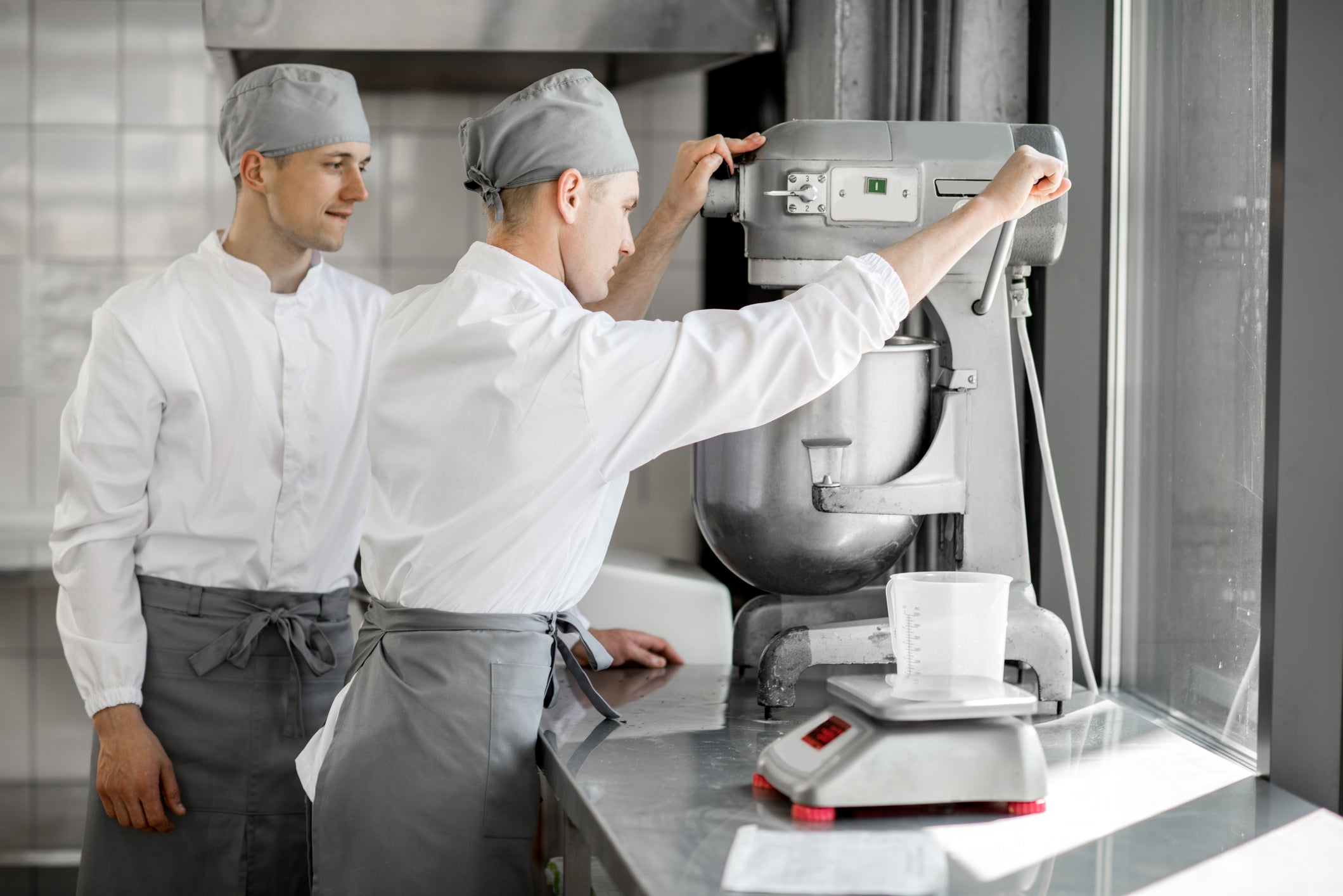
Featuring wide, thick bases that stop them from sliding around on your mixing stand or other prep surfaces, commercial stand mixers have a similar footprint to countertop or benchtop models.
However, stand mixers typically have more capacity than countertop types and are more powerful. Indeed, they have mixing power approaching that of floor mixers but without taking up as much space.
With mixing bowls usually 20 litres or bigger, stand mixers are suitable for standard-duty and heavy-duty mixing.
Floor mixers

Heavy-duty floor mixers are for high-output commercial kitchens.
They have more powerful motors and higher capacities than countertop and stand mixers.
Floor mixers can handle large batches of thick dough continually and efficiently. Their mixing bowl size is typically at least 30 litres.
Their position on the floor frees up valuable counter or preparation space.
Main things to consider before ordering a commercial mixer
What do you need the mixer for?
Figure out which mixes you need to prepare.
If you need a mixer for infrequent preparation of small batches of batter, a compact model with less motor power will suffice.
However, if your establishment needs to churn out multiple batches of dough for pizza, bread or other bakery items, you’ll need a larger and more powerful commercial dough mixer.
Find out the absorption ratio (AR) of your mixes and ask your supplier which of their makes and models have the required capacity. This information is typically available in the manufacturer’s manual.
The lower the AR, the bigger and more powerful the mixer needs to be. (Generally, a mixer’s second speed should never be used on mixtures with less than 50% AR.)
How much mixing will you do?
Find out how much dough, batter, potatoes, egg whites or other ingredients you’ll need to mix and how often.
If you’re a small restaurant serving non-bakery items, a five-litre mixer might be a good fit.
Bakeries and pizza chains churning out batches of dough continuously need a larger, more powerful model.
The less water, more fat or the colder the water in your mix, the bigger your mixer needs to be.
Mixer type
If you’re a small takeaway or restaurant, a versatile planetary mixer is probably the solution for you.
But if you’re a bakery, it would make sense to order a spiral, or dough, mixer.
Consider the size of your business and the space available in your kitchen when determining whether countertop/benchtop, stand or floor mixer would be most suitable.
Larger food establishments with extensive menus may need more than one type of commercial mixer in their kitchen.
(For more information about mixer types, please see section above.)
Bowl size
The mixing bowl size determines the quantity of ingredients the mixer can hold and process at one time.
In top makes and models, the bowl size typically matches the mixer’s maximum capacity.
A mixing bowl that is too small for your needs won’t keep up with demand, tempting you to overfill it and resulting in inefficient mixing and safety hazards.
A mixing bowl that is too large for your needs will result in wasted capacity and unnecessary additional running costs.
When mixing heavy ingredients, especially thick dough, you should either look for a more powerful dough mixer machine or mix the dough in smaller batches.
Motor power
A mixer’s motor power determines its capacity. Mixers with powerful motors can knead even heavy dough without straining the motor.
The motor power of top makes and models usually matches their bowl capacity. So, you can mix close to a full bowl of lighter ingredients without the risk of the mixer overheating or jamming.
When mixing heavy ingredients, especially thick dough, you should either look for a more powerful dough mixer machine or mix the dough in smaller batches.
Smaller mixers with less horsepower are suitable for mixing or whisking lighter ingredients.
A ½hp motor is generally all that’s required for a 10-litre countertop mixer, however, a floor mixer with more than 50-litres of capacity needs a motor of 3hp or more to perform efficiently.
Drive system
Commercial mixers have three main types of drive systems: belt-drive, gear-drive and variable frequency drive.
In belt-driven types, there are more speed choices; in some models, you can adjust the speed on the fly.
On the downside, they wear out more quickly and need more frequent maintenance. ‘Belt slip’ can also be a problem in cheaper models.
The gear-driven types are more powerful, reliable, and require less maintenance than their belt-driven counterparts.
However, you can’t change the speed while the machine is operating and there are fewer speed choices. They’re also noisier and, if they do break down, more expensive to repair.
Variable frequency drive (VFD) is the latest technology. It uses a variable speed motor that allows several speed choices and speed adjustment on the fly for maximum control and precision.
These are highly reliable, and need minimum maintenance and repair.
Mixer speed
Commercial mixers have different speed settings for calibrated mixing. While the entry-level models offer one to three speed settings, the high-end ones offer up to 12.
The more settings a mixer has, the more control you have and the more precise your mixing.
Mixers that must be switched off to change the speed can reduce the precision of your mixture.
High-end makes and models with variable frequency drives support speed adjustment on the fly and are better suited for kneading dough of different consistencies.
Built-in overload protection and slow-start-speed mixing are some of the other useful features you may want in a mixer.
Controls
Commercial mixers have either manual or digital controls.
While manual controls are simple and can be mastered with ease, digital controls are more precise.
You can even program some models to stop or change speed after a certain time. This prevents over-mixing and ensures consistent quality across multiple batches.
Electricity requirements
Before ordering an industrial mixer, check its electricity connection requirements.
Typically, you can plug a smaller mixer into a 10A or 15A mains power socket.
However, larger models with more horsepower might need to be hardwired into the power circuit.
Check whether your kitchen has the required powerpoint or whether you’ll need a new connection (as per the mixer’s specifications sheet or manual).
Some models have an emergency stop button and/or a no-volt release switch that ensures the mixer won’t automatically turn on following a power failure.
Safety features
A mixer’s safety features reduce the risk of injuring yourself when using it. All commercial mixers sold in Australia must adhere to certain product safety standards.
Among the safety features you’ll find in most commercial mixers are foot pads that prevent the mixer from moving during operation; and a bowl guard that prevents hands, clothing or foreign objects from coming into contact with the agitator during mixing.
Some models have an emergency stop button and/or a no-volt release switch that ensures the mixer won’t automatically turn on following a power failure.
You can find out more about a mixer’s safety features in its specifications sheet or manual.
Accessories and attachments
Check whether your mixer comes with attachments (e.g. dough hook, wire whisk, flat beater) — often they’re sold separately.
The appliance you’re ordering should accommodate all the attachments you need for your food preparation tasks.
Many high-end models have an attachment hub, allowing the mixer to perform additional tasks like vegetable shredding or meat grinding.
Bowl scrapers are a useful accessory that automatically scrapes the wall of the mixing bowl while it’s in motion. This ensures all the ingredients are mixed, reducing labour and waste.
A pouring chute or ingredient chute helps you safely add ingredients to the bowl while the mixer is running.
These small accessories can make the mixer more productive, and easier and safer to use.
Ease of use
The easier your mixer is to use, the better.
Even the most advanced mixer will fail to deliver if you or your staff don’t know how to use it properly or make the most of its various features.
On top of that, mishandling can damage the machine, voiding its warranty.
If your staff will need training on how to use the mixer, decide who will provide it.
Most compact mixers are simple and easy to use. A short training session is often enough to get your staff started.
However, if you have a large commercial mixer, more training will probably be required.
Ease of cleaning
Regular and proper cleaning of your commercial mixer will help it perform efficiently, maximise its useful life, and safeguard food hygiene.
High-quality stainless-steel mixers, removable bowls and attachments are easier to clean, however they tend to be heavier.
If you’re getting a smaller mixer, you may be happy to settle for a sturdy plastic body with stainless-steel bowl and attachments.
To deep clean a large commercial mixer, you might need to unscrew some attachments.
Read the user manual beforehand or get a professional to clean the mixer.
Train your staff on how to clean the mixer and put some step-by-step instructions on the wall as a reminder.
Maintenance
It’s important to maintain and service your commercial mixer regularly.
Large commercial mixers typically require a professional to add lubricant, adjust alignments or replace the seals at scheduled intervals to ensure the mixer continues to perform reliably.
Also, ask your equipment dealer about the availability of spare parts and the speed and cost of services and repairs.
Ideally, you’ll want to order a mixer that’s easy to get parts for and that can be serviced and repaired quickly and economically.
Best commercial mixers in Australia
Many of the world’s best makes of commercial mixers are available in Australia.
While the following list is not exhaustive, it includes some of the most reputable and sought-after makes and models in the country.
Hobart commercial mixers

A well-respected name in the commercial kitchen equipment industry, Hobart manufactures small, countertop planetary mixers with five-litre bowl capacity right up to heavy-duty, 140-litre floor mixers.
Among the hallmarks of Hobart mixers are sturdy bodies, reliable motors, and advanced safety features.
On the downside, Hobart’s smaller mixers have limited features and their mixers generally are pricier and more expensive to repair than other makes.
N50
A compact, five-litre benchtop mixer popular among smaller Australian businesses.
It has a 0.12kW motor and a full gear-driven mechanism with three fixed speeds, 15-minute mechanical timer, ergonomic bowl lift, and an easy-to-clean, open base.
A200
This 20-litre mixer is ideal for medium to large commercial kitchens. It can be installed on a bench or on the floor.
It has a 0.37kW (0.5hp) full gear-driven mechanism with three fixed speeds, a 15-minute timer, attachment hub, and easy-to-clean open base.
HL600
A popular ‘Legacy’ model with a 57-litre bowl capacity, 2.0kW (2.7hp) motor and advanced features.
Ideal for heavy-duty commercial use, it has four speeds, soft-start agitation and shift-on-the-fly speed selection.
It also features a 50-minute smart timer, automatic time recall, and an ergonomic swing-out bowl to make your task easier.
HL1400
Hobart's largest and most powerful commercial planetary mixer, with a 3.73kW (5hp) motor and 133-litre bowl capacity.
It has four speeds plus a stir speed electronic control mixer with shift-on-the-fly speed selection, soft-start agitation, and power bowl lift.
Standard accessories include a B-beater, dough hook, and bowl truck.
FED commercial mixers

FED commercial mixers are a good choice for busy commercial kitchens.
They are built to withstand daily commercial use and are equipped with top-quality electrical and mechanical parts.
They make some of the best smaller-capacity, tilt-head planetary mixers and larger-capacity spiral mixers, including ones with multiple motors.
The negatives include a high price tag (unless you opt for a ‘Certified Used’ commercial FED mixer) and expensive spare parts and repairs.
PLANETARY MIXERS
B10KG 10-litre heavy-duty mixer
This entry-level, compact planetary mixer has 10-litre, stainless-steel bowl and a maximum dry flour capacity of two kilograms.
Driven by a 450W motor, it has a fixed three-speed gearbox.
Its comparatively cheap price makes it perfect for start-ups.
Tyrone 40-litre heavy-duty mixer TS-240/1M
An advanced and powerful mixer that is tough, reliable and claims to be the best buy in its price bracket.
With an 1100W motor and shock-absorbing, toothed-belt drive, the mixer can easily survive the stress of daily commercial use.
It has a three-speed gearbox and manages up to 12kg of dry bread flour in one batch.
Tyrone 90-litre heavy-duty mixer TS690-1/M
Powered by a 3.8kW motor, this planetary mixer is a reliable workhorse for large and busy Australian commercial kitchens.
The mixer can manage up to 30kg of dry bread flour in a single batch.
It has a three-speed gearbox and toothed-belt drive for better reliability, electronic touchpad controls, and timer operation.
SPIRAL MIXERS
SFR50
Made in Italy, this powerful heavy-duty dough mixer has a 1.5kW motor.
Its 48-litre bowl can efficiently handle up to 20kg dry ingredients in a single batch, churning out 128kg of dough per hour.
Its stainless-steel body, bowl hooks and shaft increase its longevity, and its lift-up safety guard and tilt head make it easier to use.
FSM200M
This 200-litre mixer is designed for high-volume commercial bakeries that need to churn out several large batches of dough per day.
The mixer can handle a maximum of 75kg of dry ingredients in a batch.
It has a patented design, manual controls, Schneider contactor, fixed head and two motors — one for the bowl, one for the hook.
Robot Coupe commercial mixers

Robot Coupe mixers are known in the industry for their reliability, efficiency and longevity.
They excel in making planetary mixers, from compact, fast and efficient entry-level models to top-of-the-range floor-standing ones with powerful motors.
Ergonomic design, durable construction and advanced safety features ensure better operation.
Robot Coupe also manufacture advanced cutter mixers.
PLANETARY MIXERS
SP25-S
This popular, mid-range planetary mixer has a 25-litre bowl and 0.75hp induction motor.
It can be used on the floor or secured on a bench.
The gear driven mixer has permanently lubricated transmission, ergonomic design, removable parts, and front-mounted precision control for ease of use and cleaning.
SP502A-C
A reliable, five-litre mixer suitable for small preparations.
This entry-level model is easy to use, simple to store, and fits even in the smallest kitchens.
It has a DC carbon-brush motor and direct drive with steel-gear transmission, 10 speed options, and side-mounted manual controls for maximum precision.
SP40-S
This mid-range, floor-standing model has a 40-litre stainless steel bowl, making it ideal for medium- to large-sized preparations.
Powered by a 2hp induction motor, the mixer has gear-driven transmission and three speed settings.
It comes with both a timer and manual controls, and is supplied with a bowl trolley for easy handling.
SPB-80HI
This top-of-the-range model is designed for large businesses.
It has a 3hp induction motor with three speeds, gear-driven permanently lubricated transmission, an 80-litre stainless-steel bowl, and front-mounted controls.
The mixer is ergonomically designed, boasts best-in-class safety features, and comes with a bowl trolley.
Apuro commercial mixers

Apuro mixers are well-loved in Australian commercial kitchens, thanks to their efficiency and reliability, even in high-volume establishments. T
Apuro make mixers of various types, styles, and sizes — from compact countertop planetary mixers to large floor-standing models.
They not only work well, they’re also simple to clean and maintain.
Apuro is easier on the pocket compared to other brands. For example, you can get a compact, seven-litre Apuro planetary mixer for around $700.
PLANETARY MIXERS
DB266-A
This compact benchtop, plug-and-play mixer is one of the best options in its price bracket.
Featuring a seven-litre bowl and 270W motor, it can mix, whip, and knead dough in smaller batches efficiently.
Its full-metal-body construction and stainless-steel bowl make it easy to clean and its step-less speed control facilitates precision mixing.
GL191-A
This mid-range Apuro mixer has a 20-litre stainless-steel bowl, 1.1kW motor, lever-operated bowl lift, and three speed settings.
It can manage up to 5kg of flour and 7.5kg of dough in a single batch.
It's stand-mounted for stability and comes with other safety features too.
GJ461-A
Powered by a 1.5kW motor and with a bowl capacity of 29 litres, this mixer is ideal for busy commercial kitchens.
The maximum flour capacity of this mixer is 7.5kg and the maximum dough capacity is 11.3kg.
It has three speed settings, a lever-operated bowl lift, and vital safety features such as overload protection, safety stop, and a bowl safety guard.
GL190-A
This nine-litre mixer from Apuro is an excellent low- to mid-range model.
It is often a preferred choice for new businesses looking for a heavy-duty, compact and pocket-friendly planetary mixer.
The 550W motor has three speed settings.
Its maximum dry-flour capacity is 2kg and its maximum dough capacity is 3.2kg.
KitchenAid commercial mixers

KitchenAid, which started in 1919 manufacturing stand mixers, is one of the world’s most trusted makers of countertop kitchen appliances.
Their mixers are noted for being sturdy, powerful, easy and safe to use.
KitchenAid’s ProLine stand mixers and artisan stand mixers are known for being efficient and dependable kitchen workhorses.
Their mixers come with variable speed settings and multiple attachments to complete various tasks with high precision.
KitchenAid does not make larger commercial mixers.
PLANETARY MIXERS
Artisan stand mixer 5KSM150PSAOB
This tilt-head mixer is a favourite of perfectionist Australian bakers.
Its 4.8-litre bowl is ideal for rolling out your signature recipes in small batches.
A sturdy and compact machine, it has a 300W motor and 10 variable-speed selections for precision.
Its multiple attachment options serve a wide range of preparation needs.
Commercial lift stand mixer 5KSM895
Mix and bake in style with this 7.5-litre commercial lift stand mixer.
Its compact design looks perfect on kitchen countertops, while its 325W motor and advanced features ensure best mixing with maximum precision.
Other features include noise-free operation, and a die-cast, stainless-steel body.
Pro Line bowl lift stand mixer KSM7581
With its 18 optional attachments, this 6.9-litre mixer has the capacity to serve all your preparation needs — from gently kneading cookie dough to shredding chicken for the pies.
Its 10 speed settings give you complete control and precision, and its bowl-lift makes it easy to use.
Paramount commercial mixers

Paramount manufactures different styles and sizes of commercial planetary and spiral mixers.
Their appliances are known for their heavy-duty construction, powerful motors, and longevity.
Depending on the model, they come with timers, electronic control panels, micro-switch-controlled bowl guards, and easy speed-shifting features.
Distributed in Australia by Moffat, Paramount mixers are a good option for busy foodservice establishments.
PLANETARY MIXERS
BM20ATS
A popular, mid-range model with a 20-litre bowl, 375W motor, heavy-duty construction, and long-life gear box.
It has a three-speed, belt-driven transmission and easy speed shifting for better control and precision.
The mixer accepts a range of standard and optional accessories to enable multi-tasking.
BM40AT3PS
This heavy-duty, 40-litre model has a 1.1kW motor and belt-driven transmission.
Its sturdy, steel body and high-quality gear box gives it better longevity.
It also features three fixed speeds, a 15-minute timer, and speed shifting for easy operation and control.
SPIRAL MIXERS
SM2-25W
This spiral mixer manages up to 25kg of dough and 12.5kg of dry flour in one go.
It has two-speed electronic control panel with a micro-switch-controlled bowl guard.
It's the most compact model in Paramount’s heavy-duty SM2 range and ideal for medium to large businesses.
SM2-120TW
With a 120kg dough and 75kg dry flour capacity, this top-of-the-range model is designed for large batches.
It has a two-speed electronic control panel, micro-switch-controlled bowl guard, and — for ease of use — bowl-reverse and bowl-jog functions.
It comes with four lockdown feet for maximum stability.
Used commercial mixer — a worthwhile option?
Spending thousands of dollars on a new commercial mixer can put a strain your budget and cash flow.
If you’d prefer not to invest a lot of money in a mixer, a cheaper, pre-owned appliance might be the solution you’re looking for.
SilverChef’s range of ‘Certified Used’ commercial equipment is mostly ex-rental equipment sourced from businesses we know and trust.
The equipment is typically less than two-and-a-half year sold, has been fully refurbished by us, and is backed by a three-month parts-and-labour warranty.
You can either buy or finance the ‘Certified Used’ (and clearance) equipment on our website.
(We’re one of the few financiers, if not the only one, in Australia that funds second-hand commercial kitchen equipment.)
Warranty and insurance
Most equipment manufacturers provide warranties ranging from one to five years, depending on the type of equipment.
If the equipment develops a covered fault within that time, the manufacturer is obliged to repair or replace the equipment or give you a full refund.
Carefully study the warranty to understand exactly what is and isn't covered. For example, parts that are subject to a lot of wear and tear and need to be replaced regularly may not be covered.
SilverChef offers a three-month parts-and-labour warranty on all our ‘Certified Used’ equipment.
Business insurance covers loss or damage to your commercial kitchen equipment and other property.
This cover typically includes fire, accident, and theft. Some insurers also offer equipment-breakdown cover.
Contact your insurer to confirm whether the equipment you’re getting is automatically covered by your policy or will need to be added to it.
If your insurer doesn’t provide flood cover as standard, you may wish to consider requesting it.
Top questions to ask before you order a commercial mixer
Ask your industry peers:
- Which make and model of commercial mixer are you using?
- Why did you choose that make and model?
- Did you get a used commercial mixer or a brand-new one?
- How do you rate your experience of the mixer and why?
- Do your kitchen staff find the mixer easy to use and clean?
- How much does the mixer cost to maintain and repair?
- What has the after-sales support been like?
- Would you recommend your mixer to others?
Ask the equipment dealer or supplier:
- Will this mixer suit my establishment’s needs?
- Why do you recommend this machine?
- What safety features does this model have?
- Does this mixer come with attachments or accessories included?
- What does the warranty cover and what’s excluded?
- If the mixer breaks down, how quickly can I expect it to be repaired and can it be repaired after-hours or on weekends?
- Who do you recommend I use to service and repair my mixer?
- Are spare parts for this mixer easily available?
Commercial mixer FAQs
When shopping for a commercial mixer for the first time, you’ll naturally have a lot of questions.
See the answers to some of the most asked questions about commercial mixers.
What's the difference between a commercial and a domestic mixer?
Commercial mixers are designed for use in commercial kitchens.
These machines are powerful enough to mix high volumes of ingredients quickly and efficiently on a daily basis.
Domestic mixers, on the other hand, are built for infrequent, household use, and so have less powerful motors.
They would not be able to cope with the demands of a commercial kitchen without overheating or becoming jammed.
What is the best commercial mixer?
There is no one best commercial mixer — it depends on what your needs are.
The best mixer for you is the one that meets all your needs.
Consider the capacity, functionality and performance you desire to find the right match.
Check out the product specifications to confirm which one would be most suitable.
Where can I buy commercial mixer spares?
Commercial mixer spare parts are available from your equipment dealer or supplier. You can also buy them online from other stores.
It’s recommend you use only genuine manufacturer parts, which will ensure optimal performance and help your mixer last longer.
What is a heavy-duty commercial mixer?
Heavy-duty mixers are larger, more powerful machines used almost constantly, and which turn out high volumes of product.
The types of establishments that require these industrial mixers include bakeries and pizzerias, which make large amounts of dough for bread loaves, rolls, and pizzas.
Where can I find a commercial mixer for sale?
If you’re in the market for a new mixer, see our range of planetary and spiral mixers or visit a reputable equipment dealer in your area.
SilverChef has partnerships with hundreds of dealers nationwide; call us to find out which of our accredited dealers is nearest to you.
You can finance new mixers through us, and we also have an extensive range of fully refurbished ('Certified Used') and clearance mixers you can either finance or purchase outright.
How much is a commercial mixer?
Commercial mixer prices vary according to the brand, type, style, and capacity of the mixer.
A compact countertop mixer from a budget-friendly brand will cost around $700. A mid-range make and model will set you back about $1000.
A high-end brand, like Hobart, with advanced features, is roughly $5000.
An 80-litre floor mixer made by a mid-range brand will cost you around $17,000.
What is a fixed bowl mixer?
A fixed bowl mixer has a bowl that rotates but cannot be removed. You have to load and unload the bowl in situ every time.
Generally, these are spiral mixers designed for smaller bakeries.
What is a removable bowl mixer?
A removable bowl mixer has a bowl that can be removed and swapped with another bowl, reducing loading and unloading time.
Removable bowl industrial mixers with automated bowl lifters are best suited to large commercial kitchens.
What is a commercial bakery mixer?
A commercial bakery mixer is typically a spiral mixer designed to produce bread dough or cake batter by pulling the dry and wet ingredients together while maintaining the right dough temperature. They’re a must-have for bakeries.
Commercial mixer terminology
Here’s some commercial food mixer terminology you’re likely to hear during your mixer-shopping journey.
These definitions will help you to better understand the appliance and whether it may or may not suit your needs.
Absorption ratio
Calculated by dividing the water weight by the flour weight.
For example, if a recipe requires mixing 5 litres of water (or wet ingredients) with 10 litres of flour (or dry ingredients), the AR for that recipe will be 5/10 = 0.50x100 = 50%.
The AR helps you determine the right-sized mixer for your needs.
Dough with a lower AR is tougher and requires more power to mix and vice-versa.
In short, the lower the AR, the bigger the mixer you’ll need to do the job.
Agitator
The metal attachment that facilitates the process of mixing, chopping, kneading, etc.
It can be fixed or removable, depending on the mixer’s make and model.
Attachments
These are different types of agitators that can be attached to a mixer for different tasks.
Bowl lift
A mechanism that lifts the mixing bowl.
In smaller models, this mechanism is usually a lever that is operated manually.
Bigger models with larger mixing bowls typically have electric bowl lifts.
Bowl guard
A wire or plastic housing covering the top of the mixing bowl to prevent accidental contact of hands, clothing, or other items with the agitator while it’s in motion.
This is a vital commercial mixer safety feature.
Bowl scraper
An attachment mounted on the mixer’s agitator shaft that scrapes off ingredients from the sides of the bowl as the mixer runs.
Dough hook
A mixer attachment shaped like a hook and typically used for kneading thicker dough for bread or pizza. It can be spiral, C-shaped, or J-shaped.
The spiral-shaped dough hooks are most common in industrial mixers. The other variants are used for mixing ingredients more gently.
Drive system
The system that turns the agitator within the bowl.
In belt-driven industrial mixers, a simple strap is used to turn the agitator.
In gear-driven mixers, an intricate mechanism of cogs and gears is used.
Flat beater
A mixer attachment used for beating. It's most commonly used for preparing batters, frostings, and dough.
Horsepower
The power of the mixer motor. Mixers generally range from 1/3 horsepower to 5 horsepower.
The horsepower you need will depend largely on the density of the dough or batter you plan to mix and the batch size.
Mixer hub attachments
Attachments like shredders, slicers, meat grinders that can be attached to the hub of a mixer.
Mixing bowl
The container that holds the ingredients to be mixed, kneaded, whipped, or chopped.
Operating speed
The speed at which the agitator or the bowl moves.
Commercial mixers can typically work at different operating speeds controlled through a switch.
Refer to the manufacturer’s instructions to find out the best operating speed for your mixer or specific task.
Pastry knife
A mixer attachment used to mix pie and pastry dough. It's ideal for blending butter or oil with flour.
Power take-off attachment hub
Also known as an attachment hub, it allows the user to add attachments to the mixer to make it multipurpose, for example, shredders and slicers.
The attachments must be compatible with the hub for the system to work.
Timer
Allows you to set a mixing duration and alerts you when the time has elapsed.
Some models have a recall setting, saving you from having to reset the timer manually each time when performing a repetitive task.
Wire whisk
A mixer attachment used to whip up light and airy mixes. Ideal for whisking, creaming, and frosting.
Save your cash, use ours!
Hospitality equipment can be expensive and paying for it outright can put pressure on your business’s cash flow.
Our finance solutions allow you to get the equipment you want now and to pay for it in small, regular amounts out of the revenue it generates for you.
Rent–Try–Buy® not only helps you maintain your cash flow, it gives you unrivalled flexibility to adapt your equipment to the changing needs of your business.
You can upgrade or buy the equipment at any time or, after 12 months, return or continue renting it.
If you decide to buy the equipment, we’ll give you back 75% of the net rent you paid in the first year and 25% of any rental payments thereafter — to put toward the purchase price.



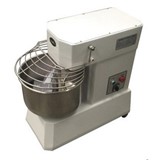
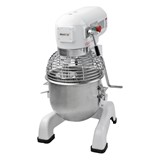


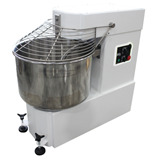
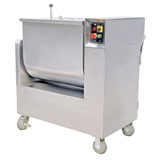
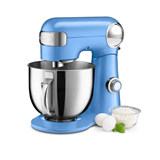
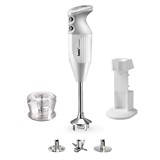


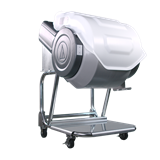
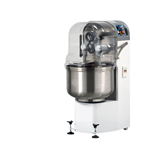



-205x205.jpeg)






